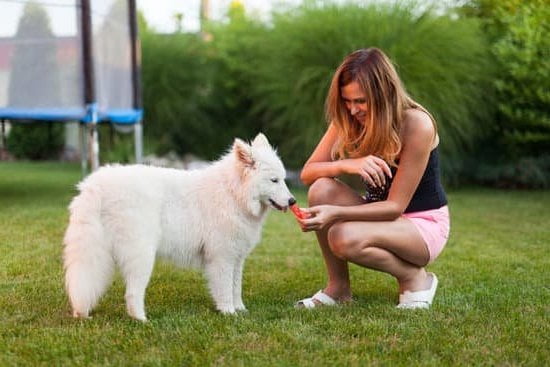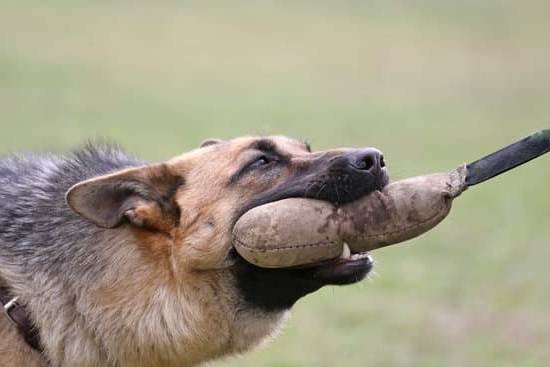How are police dogs trained to bite? Police dogs play a crucial role in law enforcement, assisting officers in various tasks such as searching for suspects, detecting narcotics, and apprehending criminals. One of the key aspects of their training is bite work, where they are taught to use controlled biting techniques when apprehending suspects. This specialized training is essential to ensure the effectiveness and safety of both the dog and their handler in high-pressure situations.
The history of police dog training has seen significant advancements in techniques, particularly in the area of bite work. From traditional methods to more modern approaches, trainers have continuously evolved their practices to enhance the skills and capabilities of police dogs. Selecting the right dog for this role is also crucial, with specific breeds known for their intelligence, agility, and strong working drive being ideal candidates for bite training.
Before diving into bite work, all police dogs undergo basic obedience training to establish a strong foundation of discipline and control. This initial phase lays the groundwork for more advanced bite training techniques, where specific commands are taught to signal when to engage a suspect and when to release them.
Additionally, scenario-based training is utilized to simulate real-life situations that officers and their canine partners may encounter in the field, preparing them for a variety of challenges they may face.
History of Police Dog Training
Police dog training has a rich history that dates back to the early 20th century when these four-legged companions were first utilized in law enforcement. Over the years, the techniques and methodologies employed in police dog training have evolved significantly, especially in the aspect of bite work.
In the past, police dogs were often trained using compulsion-based methods that relied on fear and force. However, with advancements in animal behavior science and positive reinforcement training, a more humane and effective approach has been adopted.
Transition to Positive Reinforcement
One of the most significant developments in the history of police dog training is the shift towards positive reinforcement methods. This approach focuses on rewarding desired behaviors rather than punishing incorrect actions.
When it comes to teaching police dogs how to bite, trainers now use techniques that encourage and reward natural instincts rather than rely on aggression or intimidation. By fostering a trusting and cooperative relationship between the dog and handler, positive reinforcement has proven to be more reliable and sustainable in bite training.
Integration of Clicker Training
In recent years, clicker training has gained popularity as an effective tool in police dog bite work. This method involves using a small device that emits a distinct clicking sound to mark desired behaviors instantly. By pairing this sound with rewards such as treats or toys, police dogs learn to associate biting on command with positive outcomes.
Clicker training enhances communication between the handler and the dog, making it easier to shape and refine specific bite behaviors. Additionally, it provides clear feedback for the dog, resulting in quicker learning and improved performance in real-life scenarios.
As law enforcement agencies continue to refine their training protocols, the focus remains on ensuring that police dogs are not only highly skilled in bite work but also well-adjusted and cared for animals. Through ongoing research, collaboration with animal behavior experts, and incorporating modern training techniques, police dogs today receive comprehensive preparation for their crucial role in maintaining public safety.
The evolution of police dog training reflects a commitment to excellence while upholding ethical standards and prioritizing the well-being of these invaluable working partners.
Selecting the Right Dog
Characteristics Ideal for Bite Training
These specific breeds possess traits that are essential for bite training. Their high intelligence allows them to learn complex commands and tasks quickly, making them adaptable to various scenarios they may encounter in the line of duty. Additionally, their loyalty and strong bond with their handlers create a solid foundation for effective teamwork during bite work operations.
Their agility and strength enable them to pursue suspects swiftly and apprehend them if necessary. Finally, their protective instincts make them naturally inclined to defend their handlers when faced with threats.
The Importance of Breed Selection
Choosing the right breed for police work is crucial not only for bite training but also for overall performance in law enforcement tasks. Different breeds have distinct personalities and characteristics that may make them more suitable for specific roles within a police department.
By selecting breeds known for their suitability in bite training, law enforcement agencies can ensure that their canine units are well-equipped to assist in apprehending suspects safely and effectively. The careful consideration of breed selection plays a significant role in the success of police dog training programs dedicated to developing competent K-9 teams.
The Evaluation Process
When selecting dogs for police work, thorough evaluation processes are implemented to assess each animal’s suitability for training. Factors such as temperament, drive, physical capabilities, socialization skills, and overall health are taken into account during this selection process.
Through rigorous evaluations conducted by experienced trainers and handlers, only dogs with the most potential for success in bite work are chosen to undergo specialized training programs aimed at honing their skills in obedience, scent detection, apprehension techniques, and bite work commands. This rigorous selection process ensures that only the best candidates are chosen to serve as valuable assets in law enforcement operations involving police dogs trained to bite on command.
Basic Obedience Training
Police dogs play a vital role in law enforcement, assisting officers in various tasks such as search and rescue, narcotics detection, and apprehending suspects. One critical aspect of their training is bite work, where they are taught to apprehend or restrain individuals by biting them. But how are police dogs trained to bite effectively and safely?
The process of teaching police dogs to bite starts with selecting the right candidate for this specialized training. German Shepherds, Belgian Malinois, and Dutch Shepherds are among the breeds commonly chosen for police work due to their intelligence, agility, and loyalty. These traits make them well-suited for the rigorous obedience training required before progressing to bite work.
Basic obedience training lays the foundation for a police dog’s development before they move on to the intricacies of bite work. This stage focuses on teaching fundamental commands such as sit, stay, heel, and come. The goal is to establish a strong bond between the handler and the dog while ensuring that the canine understands and follows instructions reliably. Only after mastering these basic commands can a police dog advance to more advanced techniques like controlled biting.
| Police Dog Breed | Main Characteristics |
|---|---|
| German Shepherd | Intelligent, Agile, Loyal |
| Belgian Malinois | High Drive, Alertness, Trainable |
| Dutch Shepherd | Energetic, Protective Instincts |
Advanced Bite Training Techniques
When it comes to training police dogs to bite on command and release on cue, specialized techniques are employed to ensure effectiveness and precision in their work. One common method used is known as “bite and hold” training, where the dog learns to bite down on a target (usually a padded sleeve) and maintain the grip until commanded to release. This technique helps in developing the dog’s grip strength and bite inhibition, crucial aspects in bite work.
Additionally, “out” or “release” commands are introduced during training sessions to teach the police dog when to let go of the target. Positive reinforcement, such as treats or praise, is often utilized to reward the desired behavior of releasing on cue. Consistent repetition of these commands helps reinforce the behavior in various scenarios that mimic real-life situations that the police dog may encounter while on duty.
Another essential aspect of advanced bite training techniques involves desensitizing the police dog to distractions and ensuring they remain focused on their handler’s commands during high-stress situations. This type of training instills discipline and control in the dog, allowing them to effectively respond to commands even in challenging environments. By simulating different scenarios and continuously practicing these techniques, police dogs are better prepared for their roles in law enforcement operations.
| Specialized Training Techniques | Description |
|---|---|
| Bite and Hold Training | Dog learns to maintain grip until commanded to release |
| Out/Release Commands | Introduces when to let go of target with positive reinforcement |
| Desensitization Training | Ensures focus and discipline in high-stress situations |
Scenario-Based Training
During scenario-based training, police dogs are placed in simulations that mirror real-life situations they may encounter while on duty. These scenarios are carefully designed to test the skills and response of the dogs in various challenging situations. By exposing the dogs to these scenarios during training, law enforcement agencies can ensure that the canine officers are adequately prepared to handle unpredictable and high-pressure situations in the field.
Some common scenarios that police dogs are trained in include building searches, vehicle searches, crowd control, and apprehending suspects. By practicing in these realistic settings, the dogs learn how to navigate different environments, follow scent trails effectively, and respond appropriately when faced with potential threats. This type of training helps them develop the necessary skills to assist their handlers in a wide range of law enforcement operations.
To enhance their proficiency in scenario-based training, police dogs undergo repetitive drills and exercises to reinforce their responses and decision-making abilities. Through positive reinforcement techniques and rewards for successfully completing tasks, the dogs learn to associate specific behaviors with desirable outcomes. This form of training not only improves their performance but also strengthens the bond between the dog and their handler, which is crucial for effective teamwork in high-stress situations.
- Building Searches
- Vehicle Searches
- Crowd Control
- Apprehending Suspects
- Repetitive Drills
- Positive Reinforcement Techniques
- Bonding with Handler through Training
The Role of the Handler
Police dogs are an invaluable asset in law enforcement, with their keen sense of smell and strong physical abilities making them ideal partners for police work. However, a key factor in their effectiveness is the bond between the dog and their handler.
This partnership is crucial in ensuring successful training, especially when it comes to teaching police dogs how to bite on command. Here’s a closer look at how this relationship plays a vital role in bite training:
- Trust Building: Establishing trust between the police dog and their handler is paramount in bite training. Dogs must feel safe and secure with their handlers to confidently carry out commands, especially during high-stress situations. Handlers often spend extensive time bonding with their canine partners through playing, grooming, and general interaction to build a strong foundation of trust.
- Communication: Clear communication between the handler and the police dog is essential for effective training in bite work. Handlers use verbal cues, hand signals, and even subtle body language to relay commands to their canine partners. Consistent communication helps the dog understand what is expected of them during training exercises and real-life scenarios.
- Teamwork: The partnership between a police dog and their handler goes beyond obedience commands; it extends to teamwork during operations. Handlers must be attuned to their dog’s reactions and behavior cues to anticipate potential threats or dangers. This level of synergy can make all the difference in how effectively a police dog responds during biting incidents.
The bond between the handler and the police dog is not just about command execution – it’s also about mutual respect, understanding, and care. When this relationship is fostered with patience and dedication, police dogs are more likely to excel in their training and fulfill their duties effectively. In essence, it’s this unique connection that sets apart a well-trained police dog from just any other canine companion.
Ethical Considerations
In the realm of law enforcement, police dogs play an invaluable role in aiding officers with their specialized skills, particularly in bite work. The training of police dogs to bite is a crucial aspect of their skillset, as it enables them to apprehend suspects effectively and protect both themselves and their handlers. But how are police dogs trained to bite ethically and responsibly?
It is essential to acknowledge the ethical considerations involved in training police dogs to perform bite work. While the utilization of a dog’s natural instincts for law enforcement purposes can be highly effective, there is also a responsibility to ensure that these animals are treated humanely throughout their training and operational duties. Measures must be in place to guarantee that the well-being of police dogs is a top priority, both physically and mentally.
Handlers play a vital role in fostering a strong bond with their canine partners, which is instrumental in successful bite training. This bond not only enhances communication between the dog and handler but also ensures that the dog feels safe and supported during high-stress situations. With proper selection, rigorous training, and ethical considerations at the forefront, police dogs can fulfill their roles effectively while maintaining their welfare and dignity.
Frequently Asked Questions
How Do Police Dogs Know When to Bite?
Police dogs are trained to bite on command from their handler. They are taught to follow specific verbal cues or physical signals to know when to bite during a situation where force is required.
Are Police Dogs Trained to Be Aggressive?
Police dogs are not trained to be inherently aggressive. Instead, they are trained to be highly obedient and responsive to their handler’s commands. Their training focuses on skills like search and rescue, tracking, and protection work rather than promoting aggression.
Are Police Dogs Trained to Bite Arms?
Police dogs can be trained to target various body parts based on the situation at hand, including arms. However, the primary aim of police dog training is not specifically focused on targeting one particular area of the body but rather responding appropriately to the commands given by their handler in order to control a potentially dangerous situation.

Welcome to the blog! I am a professional dog trainer and have been working with dogs for many years. In this blog, I will be discussing various topics related to dog training, including tips, tricks, and advice. I hope you find this information helpful and informative. Thanks for reading!





